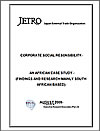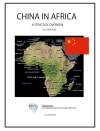 Chevron Nigeria Limited
Chevron Nigeria Limited
All data are collected in the Fiscal Year of 2008-2009.
Company Profile and History
Chevron is one of the world's largest integrated energy companies. Headquartered in San Ramon, California, it conducts business in more than 100 countries.
Chevron Corporation was originally known as Standard Oil of California, or SoCal, and was formed amid the antitrust break-up of John D. Rockefeller's Standard Oil Company in 1911.
Standard Oil of California and Gulf Oil merged in 1984, the largest merger in history at that time. Under the antitrust regulation, SoCal divested many of Gulf's operating subsidiaries, and sold some Gulf stations and a refinery in the eastern United States. SoCal changed the name to Chevron Corporation. In 2001, Chevron Corporation acquired Texaco to form ChevronTexaco.
On May 9, 2005, ChevronTexaco announced it would drop the Texaco moniker and return to the Chevron name. Texaco remains as a brand under the Chevron Corporation. On August 19, 2005, Chevron acquired the Unocal Corporation. Because of Unocal's large South East Asian geothermal operations, Chevron became the world's largest producer of geothermal energy.
Chevron began doing business in Nigeria in 1913 when Texaco products were first marketed in the country. In 1963, American Overseas Petroleum Ltd - which later became Texaco Overseas (Nigeria) Petroleum Co - discovered oil at the Koluama Field, offshore Nigeria. In that same year, Chevron Nigeria Limited (CNL) started drilling near the Escravos River and found the Okan Field. In 1996, Chevron built its 103,000-barrel state-of-the-art storage terminal and loading gantry in Apapa.
Chevron operates mostly in the onshore and near-offshore areas of the Niger Delta region of Nigeria. The company also has extensive interests in deepwater offshore Nigeria. Among them is the Agbami Field, the largest deepwater discovery offshore Nigeria to date. It is estimated to hold potentially recoverable volumes of 900 million barrels of crude oil and natural gas liquids and is expected to reach a maximum daily production rate of 250,000 barrels by year-end 2009.
In Country Location
Chevron Nigeria Limited: 2 Chevron Drive, Lekki Peninsula, Lagos, Nigeria, Telephone: +23.4.1.260.0600
Chevron Oil Nigeria PLC: 8 McCarthy Street, Lagos, Nigeria; Telephone: +23.4.1.461.4500.9; Fax: +23.4.1.461.4606
Services and Products
The company is engaged in every aspect of the crude oil and natural gas industry, including exploration and production, manufacturing, marketing and transportation, chemicals manufacturing and sales, geothermal, and power generation. Chevron also invests in renewables and advanced technologies. It is a leading producer of quality lubricants, greases, petroleum jelly and plastic containers in the country.
Number of Employees
1,800 employees
Financial Information
Turnover (Thds $): 626 271
Net profits (Thds $): 16 892
In 2008, Chevron produced 2.53 million barrels of net oil-equivalent per day. About 75 percent of that volume occurred outside the United States in more than 20 different countries.
Market Share
Chevron has the largest acreage position in deepwater offshore Nigeria. In 2008, Chevron’s total daily production in Nigeria averaged 376,000 barrels of crude oil; total crude-oil production in 2008 averaged 15,000 barrels per day (5,000 net).
In 2008, Nigerian crude oil production averaged 1.94 million bbl/d, making it the largest crude oil producer in Africa. Chevron market share 2008 19.3%.
Business Objective
“To be the global energy company most admired for its people, partnership and performance”
Business Model
“Our major business strategies will develop leading integrated positions in growth areas of the world: Global Upstream - grow profitably in core areas and build new legacy positions; Global Gas - commercialize our equity gas resource base while growing a high-impact global gas business; Global Downstream - improve returns and selectively grow with a focus on integrated value creation; and Renewable Energy - invest in renewable energy technologies and capture profitable positions.
Three enabling strategies apply to all parts of the company: Invest in people to achieve our strategies; Leverage technology to deliver superior performance and growth; Build organizational capability ("4+1") to deliver world-class performance in operational excellence, cost management, capital stewardship, and profitable growth.
Underlying and aligned with each of our Major Business and Enabling Strategies are more detailed plans, tactics, and metrics targeted to guide us to success in each of the specific business areas where we choose to compete. These detailed plans are continually tested against the competition and refreshed to achieve sustained competitive performance
Chevron continues to align its marketing portfolio more closely with the company’s refining system through market exits and divestitures of retail sites. During 2008, the company sold its heating-oil business in the United Kingdom and announced the sale of its marketing and other businesses in Nigeria, Kenya, Uganda, Benin, Cameroon, Republic of the Congo, Côte d’Ivoire and Togo and its fuels-marketing business in Brazil.”
Ownership of Business
At the end of 2008, Chevron had interests - ranging from 18 to 100 percent - in 12 deepwater blocks in offshore Nigeria. The company operates four of these blocks. The concessions include approximately 2.2 million acres (8,900 sq km) and are operated under a joint-venture arrangement with Nigerian National Petroleum Corporation (NNPC), which owns a 60 percent interest.
The concessions are: Oil Mining Lease (OML) 113 (18 percent non-operated working interest); OML 127 (80 percent-owned and operated); OML 128 and OML 129 (46.2 percent non-operated working interests); OML 132 (100 percent-owned and operated); OML 138 and OML 139 (30 percent non-operated working interest); OML 140 (95 percent-owned and operated); Oil Prospecting Lease (OPL) 214 (20 percent non-operated working interest); OPL 221 (40 percent non-operated working interest); OPL 223 (30 percent non-operated working interest) and OPL 247 (54 percent-owned and operated).
Chevron operates and holds a 40 percent interest in six oil fields collectively referred to as the Onshore Area.
The Escravos Gas Plant (EGP) is operated and 40 percent-owned by Chevron. The Escravos Gas Project Phase 3B is also 40 percent-owned by Chevron. Chevron has a 19.5 percent interest in the Olokola Liquefied Natural Gas Free Zone Enterprise (OKLNG) that will operate the Olokola LNG project.
Chevron is the largest shareholder in the West African Gas Pipeline Company Limited, with a 36.7 percent interest. The company constructed, owns and operates the 421-mile (678-km) West African Gas Pipeline that is designed to supply Nigerian natural gas to customers in Ghana, Benin and Togo for power generation and industrial applications.
Chevron has a 40 percent operated interest in the South Offshore Water Injection Project, which is an enhanced crude-oil recovery project. The objectives of this project are to boost production through water injection and increased efficiency in the Okan and Delta fields. Total crude-oil production in 2008 averaged 15,000 barrels per day (5,000 net).
Benefits Offered and Relations with Government
Following the Nigerian Indigenization Decree of 1978, which was designed to raise the level of Nigerian participation in business, Chevron divested 40 percent of its share holdings to the Nigerian public while retaining 60 percent equity in Chevron Oil Nigeria PLC.
Remark: Please also refer to “Benefits offered and relations with Government” as described in section on Addax oil as it is also applicable regarding Chevron.
Product Development
In 2003, Chevron’s production in the Western Niger Delta was shut in following community unrest and vandalism of facilities. Ninety percent of the production had been restored by the end of 2007, and during 2008, the balance was restored at all seven swamp fields (Abiteye, Makaraba, Utonana, Opuekeba, Benin River, Gbokoda and Dibi); construction activities that began in 2007 on the Olero Creek rebuild project continued in 2008, with project completion anticipated in 2011;shallow-water exploration activities in 2008 included drilling an exploration well at the Ekura prospect in OML 89 and acquiring seismic data covering OML 53; The Agbami Field produced first crude oil in July 2008. Development drilling and completion operations were expected to result in maximum total liquids production of 250,000 barrels per day by year-end 2009; production start-up of the 20-year OML 138 project is scheduled for 2012, at which time a portion of the proved undeveloped reserves is expected to be reclassified; Chevron participated in the drilling of three wells that encountered hydrocarbons-two at the Uge prospect in OPL 214 and one at the Aje prospect in OML 113; construction continued during 2008 on the EGP Phase 3A expansion in Escravos that was expected to be completed in late 2009 and begin production in 2010; and Chevron and NNPC are developing a 34,000-barrel-per-day gas-to-liquids (GTL) facility at Escravos that is designed to process 320 million cubic feet per day of natural gas from the EGP Phase 3A project. At the end of 2008, engineering was essentially complete and facility construction was under way.
To boost local availability of technical expertise, Chevron teamed with local partners to establish Nigeria's first Advanced Technology Center for Subsurface Studies. The centre, which opened in 2002, is equipped to conduct high-end technical studies. The centre’s first contract was for the full field simulation study of an undeveloped reservoir in the Meren Field.
Chevron funded the Biotechnology Centre of the Federal University of Technology in Yola, in northern Nigeria. The centre is equipped to handle research and training in molecular biology, drug analysis and advanced agricultural technologies. Chevron paid for its construction and provided an endowment of $200,000 for operating expenses.




